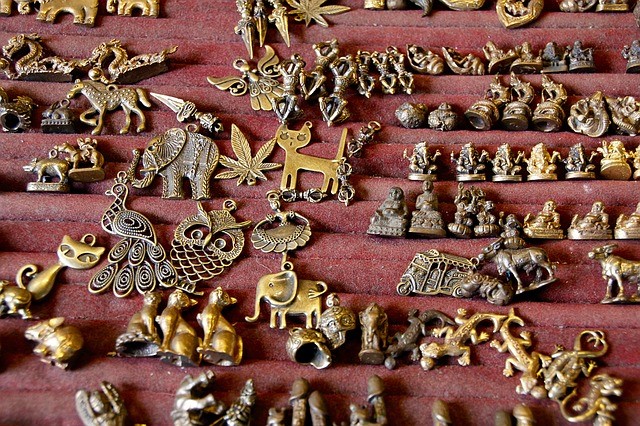So you went out to buy new jewelry but because you are on a tight budget, you decided to pick items with cheap base metals. You remember reading about brass jewelries online and how inexpensive they are, so you asked the jeweler if they have those in store. But before you even finish your sentence, they immediately tried to talk you out of it. Their reason?
- They believe jewelry pieces are intimate items that not only complement outfits, but also symbolize social status. Therefore, they must have a substantial monetary value.
- They also believe that brass jewelry can turn your skin green. Copper, which makes up about 60 percent of brass, turns green over time as it oxidizes. So, it’s only logical to assume that brass turns green over time, too. However, it’s highly unlikely for this color change to spread onto your skin.
- Most brass jewelries contain nickel and lead, two of the most notorious causes of skin allergy out there. Jewelers believe that, unlike other more expensive base metals, brass is not hypoallergenic.
While these reasons are worth factoring in your final decision, it wouldn’t be fair to not look into the pros of brass jewelry as well. After all, it’s not as bad as most people say. Many jewelry stores still offer brass jewelry, so generally, it’s an option that you can consider. Let’s take a look at some of the major benefits of brass jewelry.
- One of the enticing characteristics of brass jewelry is its gold-like appearance. Depending on copper-zinc ratio, the color of brass may range from dark brown to silvery white. To achieve a gold-like shade, you must combine around 67% copper and 33% zinc. Thanks to this unique property, brass is often used as alternative to gold for a variety of design applications.
- With copper as its base constituent, brass is among the most durable metals around. It can last for thousands of years if properly stored and maintained. As previously mentioned, brass develops a layer of greenish material on its surface. This layer, called patina, acts as a shield that protects the brass inside from corroding.
- Brass is significantly cheaper than premium-grade base metals such as sterling silver and gold vermeil. Part of the reason is its main components—copper and zinc—are still currently in great abundance. Unlike gold and silver, they are not precious metals. Another reason is that brass is used for familiar applications like construction and electronics.
Is it safe to wear brass jewelry?
Brass is made up of copper and zinc. To improve its quality, a minute amount of other metals, such as nickel and lead, is added to the mixture. The resulting brass can be tougher, shinier, or more resistant to corrosion. Some industrial brasses, including brass extrusions, bars, and tubes, even have more extra metals in them.
Unfortunately, these improvements in the quality of brass have some side effects. As mentioned earlier, nickel and lead can cause serious allergic reactions, which range from itching to rash.
Simply put, it’s not really brass that causes allergy but the new elements added to its original composition. By and large, nickel and lead should only account for no more than 1% of the entire brass alloy, but even this miniscule amount could lead to severe allergic reactions.
The thing is not all brass jewelry contains nickel or lead. Some are made purely of copper and zinc. If you are really interested in wearing brass jewelry, it is best to ask the jeweler what other metals it contains apart from copper and zinc. It’s also possible that you are allergic to copper or zinc, in which case you should avoid wearing brass jewelry altogether.
How to Polish Brass Jewelry
One of the disadvantages of brass jewelry is that it tarnishes rather quickly. The good news is there are easy ways to polish it and restore its shiny, gold-like appearance. One method involves the use of products that you most likely have in your own home. Here’s what you need to do.
- Prepare vinegar, salt, flour, warm water, and a small bowl.
- Put 1 teaspoon of salt and ½ cup of vinegar into the bowl. Mix properly until the salt completely dissolves into the vinegar.
- Add the flour into the mixture and mix well until you produce a paste-like substance.
- Rub you brass jewelry with this paste and make sure to cover all surfaces.
- Leave the item for 10 minutes, then rinse with warm water.
- Make sure to dry the brass jewelry with clean cloth as quickly as possible to prevent moisture from triggering tarnishing.
You may choose to buff up the brass jewelry with clean cloth but be careful not to apply too much force. Don’t forget that it’s a jewelry item you are polishing, not a piece of furniture. If you think polishing your jewelry this way is too risky, make do with warm water rinsing.
Apart from jewelry, brass is used for a wide range of industrial and creative applications, including construction, filtration systems, musical instruments, and machine design. This metal is so versatile you can even incorporate it in your own projects. Should you need brass supplies, make sure to purchase them from reputable brass suppliers like Rotax Metals.


